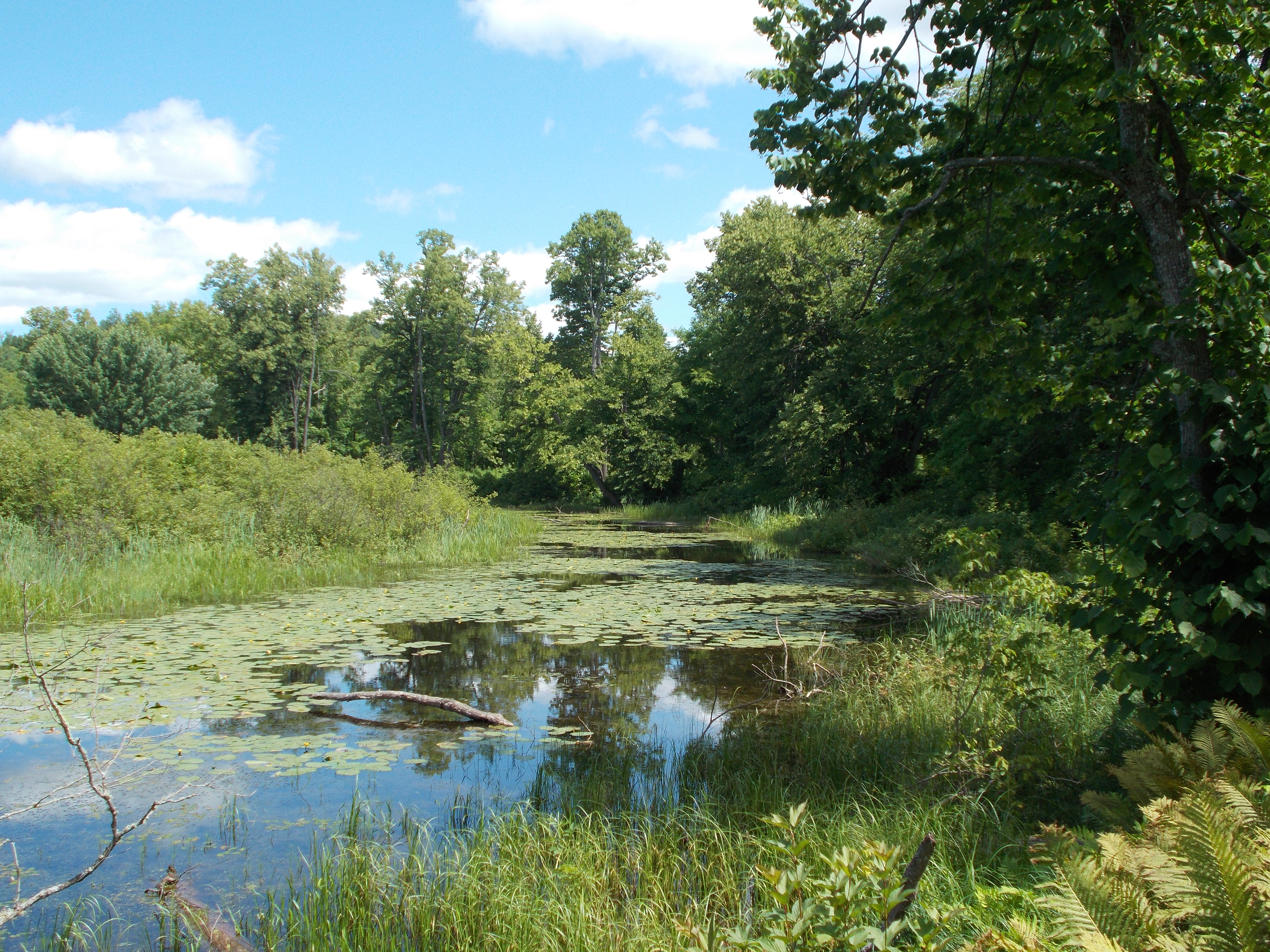Common pond types in Michigan
If you have a pond on your property, did you ever wonder how the pond got there? Why is the water pooling in that area? How did the pond form? Is it natural or is it man-made?

Lakes, pools, ponds, rivers, and streams that are natural are plentiful in Michigan. Indeed, the state not only has over 11,000 lakes and 36,000 miles of streams, but four of the five Great Lakes also surrounds it. Still many people have the desire to add a pond or other water feature on their land, or in their yards or gardens. A pond on one's property is often viewed as an asset. It can be used for recreation, to water livestock, support sport fish, add aesthetic beauty, and provide wildlife habitat. Before you begin managing your pond, the first step is to know what kind of pond you have and whether it is natural or manmade.
Naturally, occurring ponds, much like many lakes, formed as the glaciers receded over 10,000 years ago. Huge chunks of ice broke off the retreating glaciers, creating depressions and filled over glacial deposits as the ice melted. Some of the water bodies that formed were large. Other numerous smaller water bodies were also created. These resulting smaller water bodies are ponds. Ponds resemble small lakes with open water containing similar aquatic plants. They are often irregularly shaped, relatively shallow and often “green” or weedy. It is common for them to be fish free as there is no throughway for fish to enter naturally. A fishless pond, however, can still be a balanced ecosystem.
The natural damming of rivers may have created other naturally occurring ponds. Referred to as fluvial ponds, these water bodies resulted from running water created from a dam or other natural impoundment, such as an oxbow, plunge pool, or dredged wetland parallel to a river. The oxbows, for example, separated from a meandering river to create a crescent shaped pond or lake. Usually they retain their horseshoe or oxbow shape and other times they are low enough to fill in with water to become a more circular pond or lake. Sometimes people dredge them to become open ponds. In either case, they are still a part of the larger river system.
Ponds created by beaver dams are often short lived. Beaver ponds can frustrate a homeowner when suddenly they discover that their pond is gone because the beaver dam failed after it was abandoned. Ponds created by human dams are artificial and can be equally fickle if the dam is not kept in good repair.
Ponds characteristically have some open water year around which differentiates them from other water types, such as swamps, bogs, fens, and marshes. Swamp, bogs, fens, and marshes usually have trees, shrubs and other kinds of certain wetland specific plant growth in them and often dry out for portions of the year.

Some ponds were not created naturally, but were dug or engineered. These types of artificially constructed ponds can fall into two main categories: 1) those excavated from quarries and from wetlands to create open water; or 2) those wholly created with plastic or clay liner. These ponds can range in size from a few feet to several acres in size. Another pond type is an artificial impoundment formed by constructing a levee or dam. Management of these types of ponds is similar once they are established. Artificial ponds often require extra care to keep them filled with water and monitored for liner damage. A damaged liner or dredging too deeply in a clay pond can effectively “pull the plug” on the pond, causing all the water to drain away.
It can be helpful to understand the type of pond you may have to make caring for your pond easier. For example, if your pond connects to a river through a flood plain, wetland, or oxbow connection then your pond is a part of a larger contiguous body of water. If it is larger than five acres in size, it will require a Department of Environment, Great Lakes, and Energy (EGLE) permit for any type of construction, dredging or filling activities, adding chemicals, or making certain land changes. Appreciating your natural pond is surely the easiest management approach. Monitoring to prevent additional inputs from runoff and invasive species or native, but nuisance Canada geese may be the most demanding aspects. Learn more about maintenance for your natural pond at https://www.canr.msu.edu/news/preserve_your_natural_backyard_pond.
For more information about managing your pond, contact Beth Clawson, MSU Extension Educator. To learn more about this and other water quality programs, contact Michigan State University Extension Natural Resources educators who are working across Michigan to provide natural resources and water quality educational programming and assistance. You can contact an educator through MSU Extension’s “Find an Expert” search tool using the keywords “Natural Resources” or “Water Quality.”



 Print
Print Email
Email




